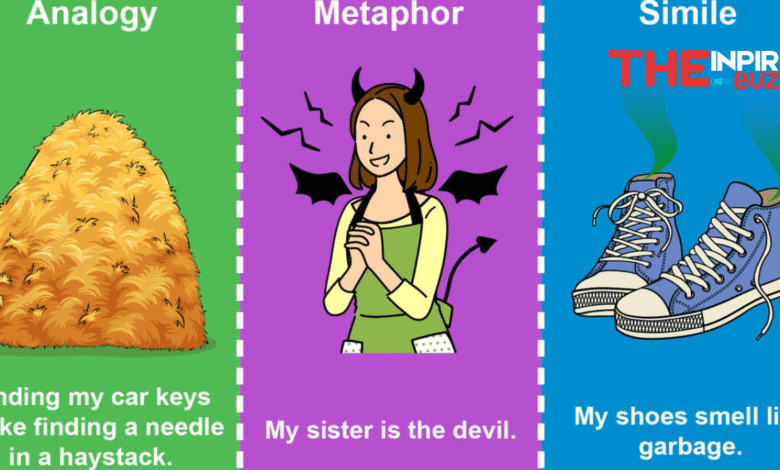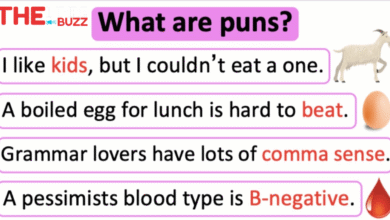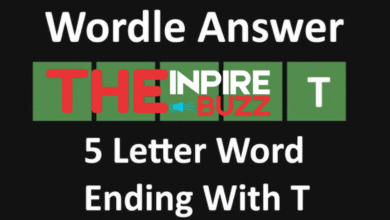Analogy Examples Understanding Ideas Through Comparison

When we struggle to explain something complex, we often reach for a familiar comparison to make the point clearer. That’s where analogy examples come in handy. They give us a bridge between the unknown and the known, turning a confusing idea into something relatable. Whether in conversation, writing, or even business presentations, analogies are one of the most effective communication tools we have.
An analogy does more than just connect two things. It creates a mental picture that helps people grasp a concept almost instantly. Instead of long, detailed explanations, a good analogy can cut through the clutter and hit the brain in a way that feels natural. That’s why you see them being used everywhere—from classrooms and novels to marketing campaigns and scientific research.
Analogy Examples in Everyday Conversations
If you’ve ever told a friend, “Learning this new app is like riding a bike—you just need some practice,” then you’ve used an analogy without even realizing it. Everyday language is full of such comparisons. These casual analogy examples help us connect experiences in a way that makes them less intimidating. By relating new things to familiar experiences, we make communication smoother and more engaging.
Think about how often people describe relationships, work, or even emotions using analogies. Saying “life is a rollercoaster” doesn’t just mean it has ups and downs—it captures the thrill, fear, and unpredictability all in one simple comparison. This is the real strength of an analogy: it condenses big experiences into something quick and digestible.
Analogy Examples in Education
Teachers know that students learn better when concepts are made relatable. That’s why classrooms are a goldmine for analogy examples. A physics teacher might explain electrical current as water flowing through a pipe, while a history teacher might compare the fall of empires to the decline of businesses. Analogies not only make lessons memorable but also spark curiosity by showing hidden connections between different ideas.
For students, analogies serve as a mental shortcut. Instead of memorizing dry facts, they build an understanding anchored in something they already know. This approach doesn’t just improve recall—it fosters critical thinking, since learners begin to see patterns across different subjects.
Why Analogy Examples Work So Well
Analogies work because our brains are wired for connection. We learn best by linking new ideas with what we already understand. A good analogy creates that “aha” moment, where something suddenly makes sense. Instead of overloading the mind with raw data, it offers a story or image to hang onto.
Beyond understanding, analogies also make content more persuasive. If you’re trying to convince someone of your point of view, an analogy simplifies your message without dumbing it down. It gives people an anchor, something they can picture clearly, which makes your argument more relatable and harder to dismiss.
Creative Uses of Analogy Examples
Writers and speakers often use analogies to add color and personality to their work. A well-placed comparison can make even a technical topic feel alive. Imagine explaining cloud computing by saying, “It’s like renting an apartment instead of buying a house—you use it without owning the whole thing.” Suddenly, the abstract world of technology feels grounded in everyday life.
In business or marketing, analogies can transform dry sales pitches into engaging stories. Customers might not care about the technical features of a product, but if you explain it as “a personal assistant that never sleeps,” you instantly spark their interest. That’s the kind of power analogy brings to creative communication.
Analogy Examples in Science and Technology
Science often deals with concepts too small, too big, or too abstract for the human mind to grasp easily. That’s why scientists lean on analogy all the time. Atoms, for instance, are often compared to tiny solar systems, with electrons orbiting like planets. Though not literally accurate, such analogy examples give learners a way to picture something invisible.
In technology, analogies bridge the gap between technical experts and everyday users. Explaining software updates as “like fixing potholes on a road” instantly makes sense to someone with no IT background. Without analogies, tech communication would remain locked behind jargon, limiting its reach.
Analogy Examples in Storytelling
Storytelling thrives on analogies because they help readers or listeners connect emotionally. A novelist might describe loneliness as “standing in a crowded room with an invisible wall around you,” giving the audience a direct feeling of isolation without spelling it out. These comparisons bring abstract emotions to life in a way pure description cannot.
Speakers, too, use analogies to leave a lasting impact. Motivational talks, for instance, are packed with comparisons: challenges are “mountains to climb,” teamwork is “a well-oiled machine,” and dreams are “seeds waiting to grow.” Each analogy paints a vivid mental image that sticks long after the speech ends.
Developing Your Own Analogy Examples
Coming up with effective analogies isn’t just a talent—it’s a skill anyone can develop. The key is to start with the idea you want to explain and then search for a relatable experience your audience already understands. The best analogies are rooted in everyday life, so think about food, travel, nature, or common experiences.
It’s also important to keep analogies simple. If your comparison needs a second explanation, it’s not doing its job. A clear, sharp analogy grabs attention and makes people nod in understanding. With practice, you’ll find that creating analogies becomes second nature, whether you’re writing, teaching, or just chatting with friends.
Limitations of Analogy Examples
As powerful as analogies are, they’re not perfect. Every analogy is a simplification, and if pushed too far, it can actually confuse more than it clarifies. For instance, the atom-as-solar-system analogy works in basic teaching, but it breaks down once you dive into quantum mechanics. Misapplied analogies can create misunderstandings that take extra effort to correct.
Another limitation is cultural relevance. What feels like a brilliant analogy in one culture might make no sense in another. That’s why context matters. Always tailor your comparisons to the background and knowledge level of your audience to avoid confusion.
Conclusion
Analogies are more than just clever wordplay. They’re a timeless tool for bridging gaps between ideas, experiences, and people. From classrooms to boardrooms, from casual conversations to groundbreaking research, analogy examples show up everywhere because they work. They help us understand, persuade, and connect in ways that plain facts often can’t.
FAQs About Analogy Examples
What is the difference between a metaphor and an analogy?
A metaphor says one thing is another, while an analogy explains how one thing is like another. Metaphors are more poetic, while analogies are more explanatory.
Why are analogy examples important in communication?
They simplify complex topics, make ideas relatable, and improve both understanding and retention.
Can analogy examples be used in professional writing?
Absolutely. They’re especially useful in technical fields, business communication, and education, where clarity is essential.
Are analogy examples always accurate?
Not entirely. They’re meant to clarify, not to provide a perfect scientific or factual match. Their power lies in simplification, not precision.
How can I practice creating better analogies?
Pay attention to everyday experiences, look for patterns, and test your analogies on friends or colleagues to see if they create instant understanding.



